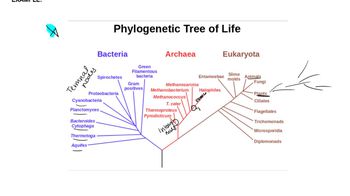Table of contents
- 1. Introduction to Genetics51m
- 2. Mendel's Laws of Inheritance3h 37m
- 3. Extensions to Mendelian Inheritance2h 41m
- 4. Genetic Mapping and Linkage2h 28m
- 5. Genetics of Bacteria and Viruses1h 21m
- 6. Chromosomal Variation1h 48m
- 7. DNA and Chromosome Structure56m
- 8. DNA Replication1h 10m
- 9. Mitosis and Meiosis1h 34m
- 10. Transcription1h 0m
- 11. Translation58m
- 12. Gene Regulation in Prokaryotes1h 19m
- 13. Gene Regulation in Eukaryotes44m
- 14. Genetic Control of Development44m
- 15. Genomes and Genomics1h 50m
- 16. Transposable Elements47m
- 17. Mutation, Repair, and Recombination1h 6m
- 18. Molecular Genetic Tools19m
- 19. Cancer Genetics29m
- 20. Quantitative Genetics1h 26m
- 21. Population Genetics50m
- 22. Evolutionary Genetics29m
7. DNA and Chromosome Structure
Eukaryotic Chromosome Structure
Problem 30a
Textbook Question
Human chromosome 5 and the corresponding chromosomes from chimpanzee, gorilla, and orangutan are shown here. Describe any structural differences you see in the other primate chromosomes in relation to the human chromosome.
 Verified step by step guidance
Verified step by step guidance1
Step 1: Identify the human chromosome 5 structure. Note its size, banding pattern, and any unique features.
Step 2: Examine the chimpanzee chromosome corresponding to human chromosome 5. Look for differences in size, banding pattern, and any structural variations such as inversions or translocations.
Step 3: Analyze the gorilla chromosome that corresponds to human chromosome 5. Compare its structure to the human chromosome, noting any differences in length, banding, or structural rearrangements.
Step 4: Review the orangutan chromosome that matches human chromosome 5. Identify any structural differences, such as changes in banding patterns, size, or chromosomal rearrangements.
Step 5: Summarize the structural differences observed in the chimpanzee, gorilla, and orangutan chromosomes compared to human chromosome 5, highlighting any common patterns or unique variations.
 Verified video answer for a similar problem:
Verified video answer for a similar problem:This video solution was recommended by our tutors as helpful for the problem above
Video duration:
2mPlay a video:
Was this helpful?
Key Concepts
Here are the essential concepts you must grasp in order to answer the question correctly.
Chromosomal Structure
Chromosomal structure refers to the organization of DNA within a chromosome, including the arrangement of genes, regulatory elements, and non-coding regions. Differences in chromosomal structure among species can include variations in the number of chromosomes, the presence of additional segments, or alterations in the size and shape of chromosomes, which can affect gene expression and function.
Recommended video:
Guided course

Chromosome Structure
Comparative Genomics
Comparative genomics is the study of the similarities and differences in the genomes of different species. By comparing the chromosomes of humans with those of other primates, researchers can identify evolutionary changes, such as gene duplications, deletions, or rearrangements, that may contribute to species-specific traits and adaptations.
Recommended video:
Guided course

Genomics Overview
Evolutionary Relationships
Evolutionary relationships among species can be inferred from chromosomal differences, as these variations often reflect the evolutionary history and divergence of species. Understanding these relationships helps in tracing the lineage of primates and can provide insights into the functional implications of structural differences in chromosomes, such as adaptations to different environments.
Recommended video:
Guided course

Phylogenetic Trees

 7:10m
7:10mWatch next
Master Chromosome Structure with a bite sized video explanation from Kylia Goodner
Start learningRelated Videos
Related Practice


